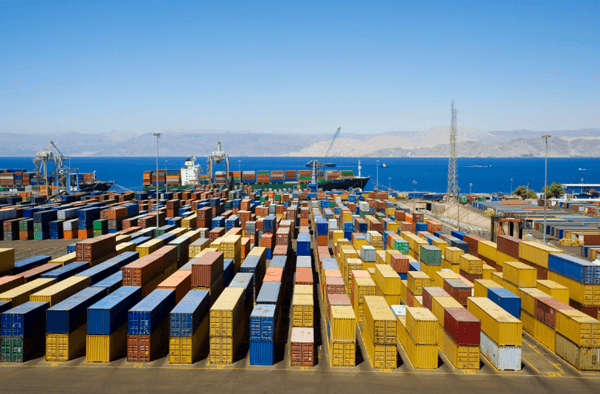As U.S. shippers, truckers, and port terminal operators prepare for the busy import and export season this fall, a significant concern is on the minds of many: port congestion.
Though port complexes throughout the U.S. have invested in productivity improvements over the past year—implementing new technology, extending gate hours, modifying chassis operations, etc.—we’re still seeing room for efficiency improvements. For example, the average truck visit to the Los Angeles-Long Beach port complex in June was 83 minutes. Underperforming container terminals create problems for both carriers and shippers; truckers aren’t able to complete as many turns per day, and shippers are often hit with congestion surcharges as high as $200 (JOC.com). Port congestion not only impacts these groups; it threatens the entire U.S. economy, as keeping goods flowing smoothly through the supply chain is imperative to the economy’s health (JOC.com).
Continued investment in operations will surely help alleviate congestion, but one of the most important components to improving the situation could be data. Compiling national port metrics into a single, shared platform may be the key to better planning, increased transparency, more productivity, and reduced congestion.
Congressional Intervention
Under the Fixing America’s Surface Transportation (FAST) Act, Congress requires an annual assessment of U.S. productivity by the DOT’s Bureau of Transportation Statistics. Partly in response to the major labor dispute between the International Longshore and Warehouse Union and the Pacific Maritime Association that cost the supply chain industry billions of dollars, this legislation calls for a task force to come together and establish industry-wide metrics that gauge port productivity. Examples of metrics that shippers have proposed include average lifts per hour by vessel size, average monthly container dwell time, average truck turn time, chassis availability, and other key performance indicators (JOC.com).
Comprised of transportation industry representatives, labor union members, government officials, and manufacturers, the Port Performance Freight Statistics Working Group must “provide nationally consistent measures of performance” of the nation’s largest ports by December 4, 2016 (US DOT).
Cue the Backlash
In the working group’s first meeting less than a month ago, it became clear that establishing national port productivity metrics may be easier said than done. The meeting got off to a rocky start, as many members of the group—namely port authorities, labor unions, and railroad reps—expressed opposition to the legislation, some even questioning the existence of the group itself (JOC.com). The backlash stems from a number of factors:
- Uncertainty about the group’s mission. Some aren’t sure why they’re being asked to collect data and feel that the initiative lacks a clear purpose. Many feel that a formal position on what will be done with data collected would make for more productive discussions.
- A threat to collective bargaining. Labor groups are worried that a data collection program would limit their strength in contract negotiations, arguing that the types of data shippers want to collect have been used against them in past labor disputes.
- Fear of exposing proprietary information. Several port authorities say that standardizing port metrics would force them to reveal proprietary information, which would hurt their business. They feel that publicly broadcasting their data would stifle free trade and fair competition among terminals (JOC.com).
Why Port Metrics Matter

While the concerns of the working group are valid, it’s important to remember why this legislation was called for in the first place: a need for increased transparency. Shippers—who represent a minority in these discussions—say they aren’t concerned with workforce productivity or the collective bargaining power of labor unions. Their primary focus is on capacity and long-term solutions to looming port congestion.
Establishing a common language for productivity measurement will not be easy, but it could lead to drastic efficiency gains. As long as these productivity metrics aren’t used by policy makers for punitive measures, they could provide immense value to the entire supply chain.

